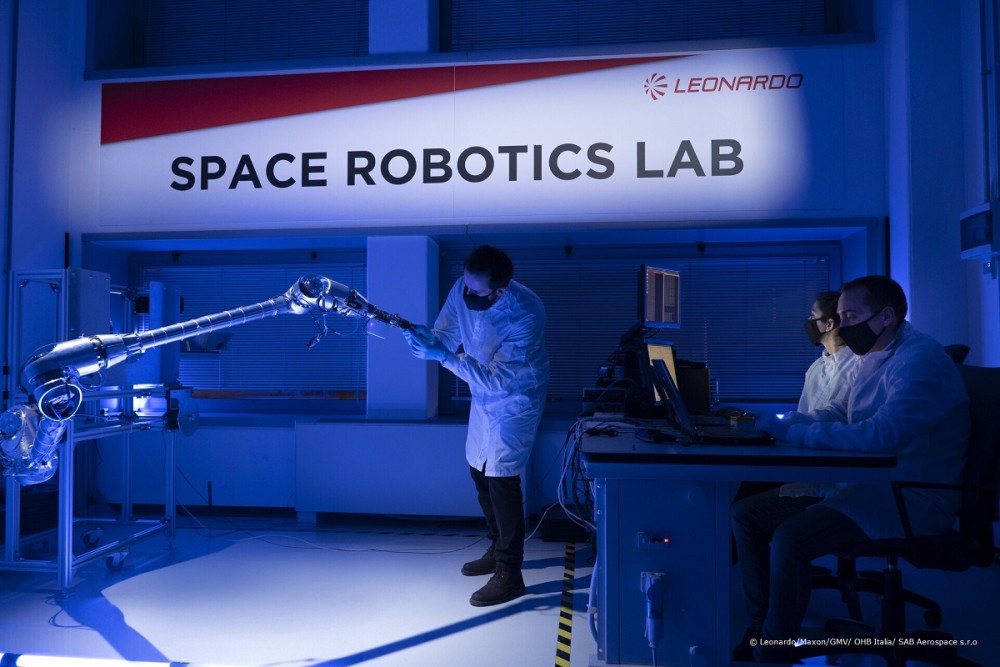GMV to Contribute Several Systems to Robotic Surface Vehicle Arm for Mars Sample Return Program

In July, the European Space Agency (ESA) and Leonardo S.P.A. gathered at the Farnborough International Airshow (FIA2022) for the signing ceremony of the Mars Sample Return-Sample Transfer Arm (MSR-STA) contract.
As part of this project, led at European level by Leonardo, GMV is set to develop various hardware and software subsystems. In fact, the company has already set about on the operational phases.
The STA is the European robotic arm being developed by the ESA to transfer tubes containing Martian surface samples from the Perseverance rover to the container that will be returned to Earth, and to close said container. This robotic arm will travel to Mars aboard the Sample Return Lander developed by JPL in a joint ESA-NASA mission scheduled to take off in 2028.
In collaboration with 3DPlus and AVS, GMV will develop the STA’s perception unit, consisting of cameras for detecting the sample tubes and other parts of the Sample Return Lander, as well as the caps that will protect these cameras during the Mars landing. This hardware, installed at the end of the robotic arm, will be exposed to the harsh conditions of Mars, with temperatures as low as -130ºC.
GMV will also develop the high-level control software that will demonstrate the STA’s compliance with mission requirements during its qualification in Europe. This software can visually detect the sample tubes and estimate their position so that they can be collected. The high-level software also controls the manipulator in such a way that the tubes can be retrieved and loaded into the container completely autonomously, without the involvement of ground control.
Finally, GMV will develop electrical ground support equipment (EGSEs) and a simulator to assist in systems engineering and STA operations on the surface of Mars.
The current phase will last one year, during which the preliminary design of these subsystems will be carried out. Delivery of the equipment will take place in 2025, with the flight phase then planned for 2028.